GDI汽油机颗粒捕集器的设计与开发毕业论文
摘 要
缸内直喷(GDI)汽油机由于其较高的动力性、燃油经济性、良好的瞬态响应性能以及较大的优化潜力,在我国汽车市场的份额中占的比例较大。但是GDI汽油机混合气的形成时间较短,混合气分布不均匀,导致其颗粒物的排放比传统汽油机多,容易对大气环境造成污染。而且随着国六排放法规的实施,不仅将颗粒物质量(PM)的排放限值到3.0mg/km,而且还增加了对颗粒物数量(PN)排放的限制,将其限值到6.01011个/km,所以需要对GDI汽油机颗粒物的排放进行控制。目前,汽油机颗粒捕集器(GPF)在控制汽油机颗粒物的排放上有着显著的效果。
本文在国六排放法规的背景下,为减少GDI汽油机颗粒物的排放,对GPF结构进行了设计与开发。通过对GPF的结构进行参数设计,然后利用仿真软件对GPF内部流场特性进行研究,最后通过分析影响GPF内部流场的因素,进而对GPF结构进行优化设计。
首先,进行GPF的结构设计。对国六排放法规以及颗粒物的排放控制技术进行了简单介绍;并在前人研究的基础上,对GPF进行结构设计,分析了各种过滤材料的优缺点后,选取了堇青石作为过滤材料;对比了三种载体的孔道结构的优缺点后,选择了过滤效果最好的非对称式孔道结构,并采用后置式方式布置GPF;通过计算GPF的装排比,确定载体的长度为116mm,直径为128mm。
其次,建立了GPF计算流体动力学仿真模型。介绍了计算流体力学的相关概念,对GPF内部流场进行了分析。根据设计的GPF参数,利用CATIA软件进行GPF外壳的三维建模。利用STAR CCM 软件完成流体计算域的网格划分以及进出口边界条件的设置;采用耦合求解算法以及湍流模型进行GPF的流场计算;对计算所得到的压力云图、温度云图和流线图进行详细的分析。
最后,影响GPF内部流场的因素分析。基于GPF流场分析的结果,对影响GPF内部流场的因素进行分析。分别研究了进气口弯道角度、扩张腔角度、载体长度、入口温度对GPF内部流场的影响,发现进气口弯道角度减小、扩张腔角度增大有利于降低GPF的背压和改善气流的流动均匀性。在此基础上对GPF进行了结构优化,改善后的GPF背压降低、气流流动均匀性更好。
关键词:国六排放法规;汽油机颗粒捕集器;流场分析
Abstract
Because of its high dynamic performance, fuel economy, good transient response, and large potential to optimize the direct injection gasoline engine accounts for a larger proportion of the automobile market in China. However, the formation time of gas mixture of GDI gasoline engine is short, and the distribution of gas mixture is not uniform, and the emission of particulate matter is more than that of traditional gasoline engine, which makes it easier to cause pollution to the atmosphere. With the release of the Sixth National Emissions Regulations, not only the emission of particulate matter (PM) are limited to 3.0 mg/km, but also the number of particulate matter (PN) is limited to 6.0×1011#/km, so it is necessary to control the emissions of particulates of GDI gasoline engine. The Gasoline Particulate Filter (GPF) is the most effective measure to control exhaust emissions of gasoline engines currently.
On the premise of the China 6 emissions regulations, the paper designs and develops the GPF structure in order to reduce the emissions of GDI gasoline engine particulates. By designing the structural parameters of the GPF, then the characteristics of the internal flow field of the GPF are studied using simulation software. Finally, the factors affecting the internal flow field of the GPF are analyzed, and the GPF structure is further optimized.
First of all, conducting the structural design of GPF. This article gives a brief introduction to the China 6 emission regulations, and the particulate matter emission control technology. On the basis of previous studies, the structural design of GPF is discussed on this thesis. After analyzing the advantages and disadvantages of various filter materials, cordierite is selected as the filter material. The advantages and disadvantages of the pore structure of the three carriers were compared, then the asymmetrical channel structure with better filter performance is chosen. Choosing UF arrangement as the arrangement of the GPF. By calculating the loading and discharging ratio of GPF, the length of the carrier is determined to be 116 mm and the diameter is 128 mm.
Secondly, GPF computational fluid dynamics simulation model is established. The related concepts of computational fluid dynamics are introduced, and then the flow field of GPF is analyzed. According to the designed GPF parameters, the three-dimensional modeling of the GPF shell is performed using CATIA software. Based on the STAR CCM software, the mesh of the fluid computation domain is completed, the boundary conditions of the inlet and outlet are set, the flow field calculation of the GPF is performed using a coupled solving algorithm and a turbulence model, and the pressure cloud map, temperature cloud map, and streamline diagram which are formed after calculation were analyzed in detail.
Finally, analysis of factors influencing GPF internal flow field. Based on the analyzing results of the GPF flow field, the factors affecting the GPF internal flow field are analyzed. The influences of air inlet bend angle, expansion cavity angle, carrier length and inlet temperature on the internal flow field of GPF were studied respectively. It was found that increasing the angle of air inlet bend and decreasing the angle of expansion cavity are helpful to reduce the back pressure of GPF and improve flow uniformity of the gas flow. Based on this, the structure of the GPF is optimized, the back pressure of the improved GPF is reduced, and the flow uniformity of the gas flow is better.
Key Words:China 6 emissions regulations;gasoline particulate filter;fluid analysis
目 录
摘 要 I
Abstract II
第1章 绪论 1
1.1 课题来源与研究意义 1
1.2 国六排放法规介绍 2
1.3 颗粒物生成机理与控制技术 3
1.4 汽油机颗粒捕集器国内外研究现状 5
1.5 本文主要研究内容 6
第2章 GPF的结构设计 8
2.1 颗粒捕集器过滤原理 8
2.2 GPF过滤材料的选择 8
2.3 GPF布置方式 9
2.4 GPF装排比设计 10
2.5 滤芯孔道结构的设计 11
2.6 GPF的再生 12
2.7 本章小结 14
第3章 GPF内部流场分析 15
3.1 计算流体力学基本概念与仿真软件介绍 15
3.2 仿真模型的建立和边界条件的设定 18
3.3 仿真计算结果分析 19
3.4 本章小结 23
第4章 GPF内部流场影响因素分析 24
4.1 进气口弯道角度对流场的影响 24
4.2 扩张腔角度对流场的影响 25
4.3 载体长度对流场的影响 26
4.4 入口气流温度对流场的影响 27
4.5 GPF结构优化 30
4.6 本章小结 31
第5章 结论与展望 32
5.1 结论 32
5.2 展望 32
参考文献 34
致 谢 36
第1章 绪论
1.1 课题来源与研究意义
近年来,环境污染越来越严重,空气质量严重影响到了人们的生活,尤其是雾霾对人们的生活造成了很大的影响,人们也越来越重视对环境的保护。图1-1是雾霾对空气的影响。汽车尾气颗粒物的排放是PM产生的主要途径之一,而我国近年来汽车市场快速发展,全国汽车保有量为1.56亿,汽车尾气颗粒物的大量排放对大气环境造成了很大的影响。图1-2是汽车尾气的排放。为了使大气环境得到改善,控制汽车尾气的排放,中华人民共和国环境保护部于2016年12月发布了国六排放标准,该标准对PM和PN都有着更严格的排放控制。
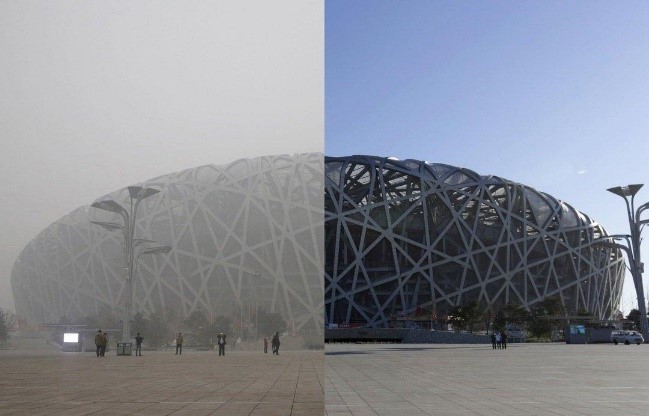

图1-1 雾霾对空气的影响
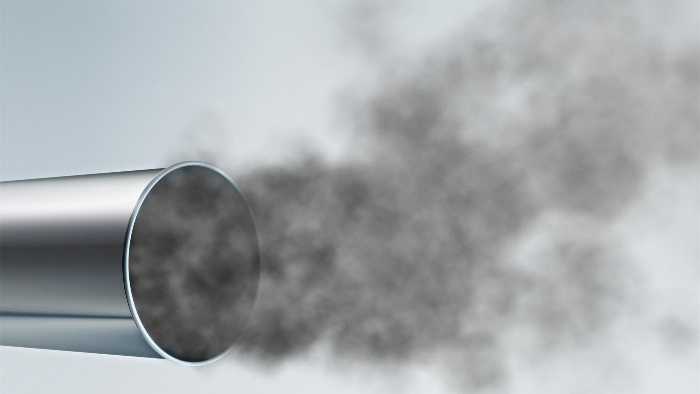
图1-2 汽车尾气的排放
在汽油车中,缸内直喷汽油机由于其具有较高的动力性、燃油经济性、良好的瞬态响应性能以及较大的优化潜力,在我国汽车市场的份额中占的比例较大。但是GDI汽油机混合气的形成时间较短,混合气分布不均匀,其颗粒物的排放比传统汽油机多,容易对大气环境造成破坏。而且随着国六排放法规的实行,对汽车排放的限制更加严格。为了控制GDI汽油机颗粒物的排放,关于汽油机尾气后处理系统的设计和开发已经得到了大家的广泛关注。根据研究,汽油机颗粒捕集器技术是降低汽油机颗粒物排放、实现汽油车清洁化的最有效手段,所以和汽油机颗粒捕集器有关的研究和应用得到了大力发展。
有关GDI汽油机尾气排放控制的研究,不仅能够减少汽油机颗粒物的排放、节能减排、保护环境,也能够充分利用GDI汽油机的优点。本文将通过研究GDI汽油机颗粒物的排放机理以及颗粒捕集器的结构,设计出合适的GPF来减少汽油机颗粒物的排放,进而减少对环境的污染。
1.2 国六排放法规介绍
在2016年12月,我国环境保护部发布了《轻型汽车污染物排放限值及测量方法(中国第六阶段)》即“国六”排放标准。该标准是在“国五”标准的基础上,对排放限制的进一步升级。“国六”标准没有采用“国五”标准的测试循环,而是在基于全球通用的WLTC测试循环和中国汽车排放的实情所制定的,这对于我国汽车行业的发展、对于我国汽车走上世界有着积极的促进作用。
为了使我国汽车行业有足够的时间来进行汽车的系统升级和新车型的研发和生产,国六标准分为两个阶段进行实施。在2020年,首先实施国六(a)的排放标准,在该阶段PM的限值为4.5mg/km,PN为6.01011个/km;到2023年,将实施国六(b)的排放标准,在该阶段PM的限值为3.0mg/km,PN的限值和a阶段一样,保持不变。表1-1给出了国六排放法规两个阶段的限值。
表1-1 国六法规排放限值
排放物 | 国六a | 国六b |
CO/g/km | 0.7 | 0.5 |
THC/g/km | 0.10 | 0.05 |
NMHC/g/km | 0.068 | 0.035 |
NOx/g/km | 0.060 | 0.035 |
PM/g/km | 0.0045 | 0.0030 |
PN/个/km | 6.01011 | 6.01011 |
1.3 颗粒物生成机理与控制技术
1.3.1 汽油机颗粒物生成机理
在汽油机中,尾气颗粒物的排放来源于三个方面:含铅汽油燃烧生成的铅化物,汽油中的硫生成的硫酸盐以及不完全燃烧生成的碳烟。与柴油机相比,汽油机的颗粒物直径更小,排放到空气中对人们造成的伤害更大。
GDI汽油机由于有着良好的动力性、经济性等优点,在汽车上得到广泛的应用。GDI汽油机的燃料直接喷入气缸,因此容易造成油气混合不均匀和燃油湿壁,使汽车尾气排放的PM比传统汽油机更多。GDI汽油机排放的颗粒物主要分为两类:碳质颗粒和非碳质颗粒。颗粒物主要来源于缸内局部浓区的燃烧、附壁油膜的池火燃烧和结焦喷油器附近的扩散燃烧,而其中最主要的是附壁油膜的池火燃烧。另外,燃油喷射策略和混合气形成方式对颗粒物的生成也有着决定性作用。
GDI汽油机的颗粒物在冷启动、加速和稳态催化剂加热过程中产生最多[1]。在冷启动阶段,颗粒物排放量相对较高的原因在于当冷启动时,进气流速和气缸内的温度相对较低,并且燃料雾化差,难以形成均匀的混合气,导致颗粒物排放量增加。在稳态催化剂的加热过程中产生更多颗粒物的原因是为了使催化剂尽快达到起燃温度。在加速过程中,燃料喷射量随着负荷的增加而增加,气缸内温度升高,过量空气系数降低,形成大量的碳烟核心,最终形成颗粒物。
1.3.2 颗粒物排放控制技术
GDI汽油机的颗粒物排放量比传统汽油机要多,因此需要采取一些排放控制技术来减少颗粒物的生成,或者将生成的颗粒物在排放到大气环境之前予以去除。目前,对于汽油机颗粒物排放控制技术主要分为机内净化技术和机外净化技术。
1.3.2.1 机内净化技术
通过技术手段,优化汽油机混合气的燃烧过程,减少颗粒物的生成称为机内净化技术。机内净化技术主要是尽可能使燃料和空气混合均匀,减少燃烧室内局部混合气过浓或过稀的情况。机内净化技术主要有:
(1)增压中冷
增压中冷技术是通过将空气进行压缩,提高汽油机的进气量,从而提高混合气的过量空气系数来降低颗粒物的排放。采用该技术可以使燃料燃烧更充分,燃油的动力性和经济性也会有所改善,此外还能降低CO和HC的排放。
以上是毕业论文大纲或资料介绍,该课题完整毕业论文、开题报告、任务书、程序设计、图纸设计等资料请添加微信获取,微信号:bysjorg。
相关图片展示:
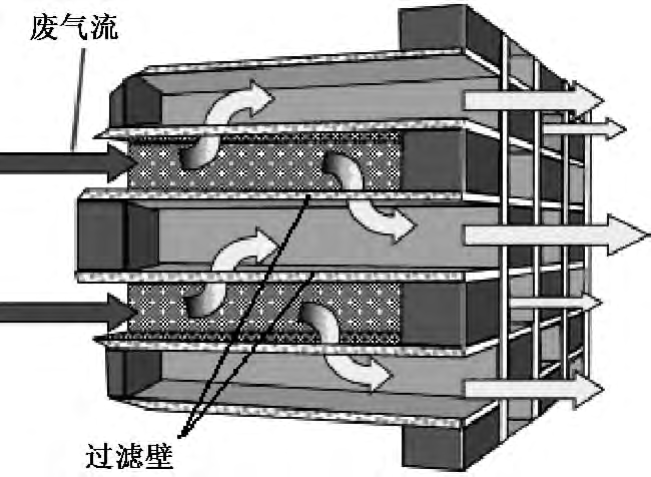
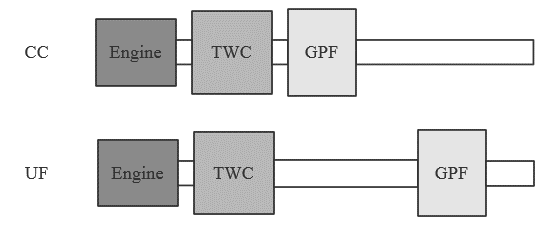
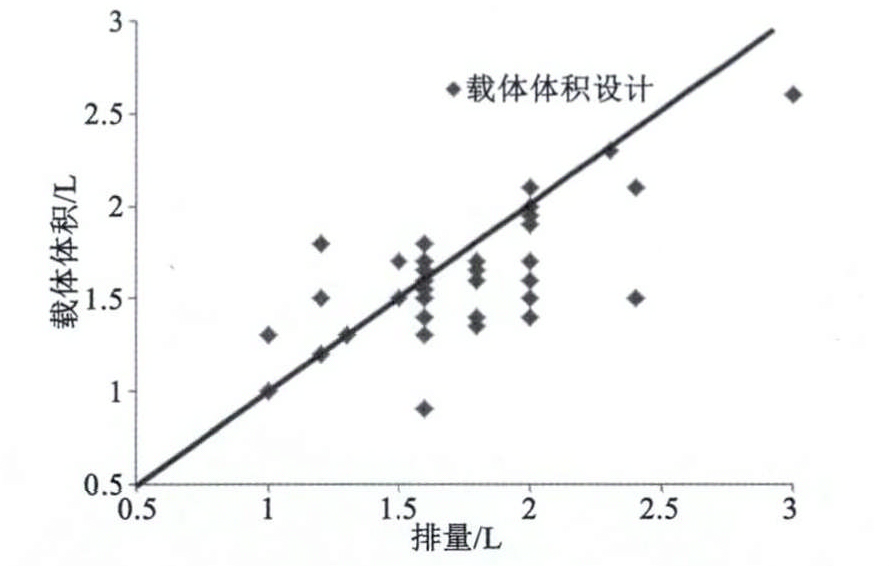
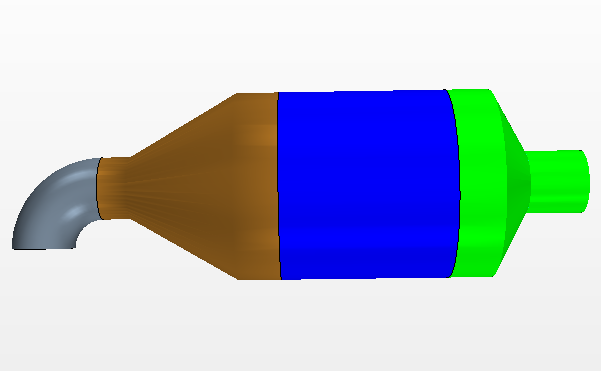
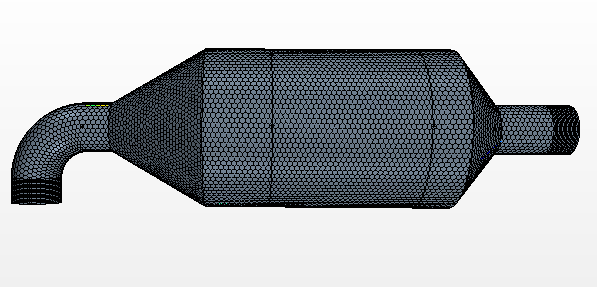
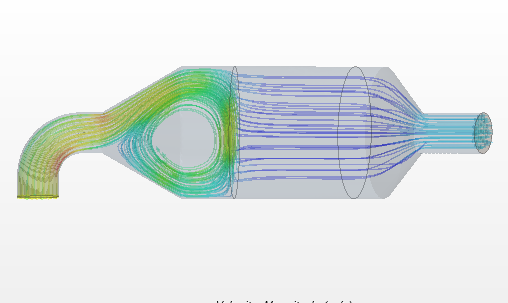
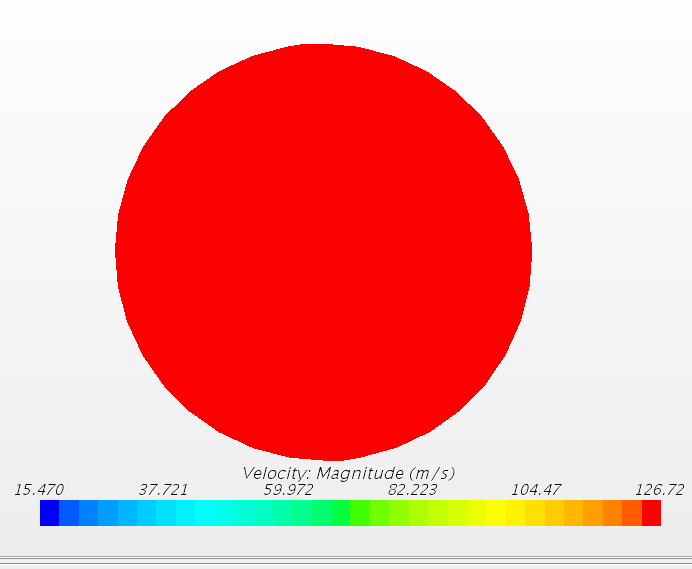
课题毕业论文、开题报告、任务书、外文翻译、程序设计、图纸设计等资料可联系客服协助查找。



